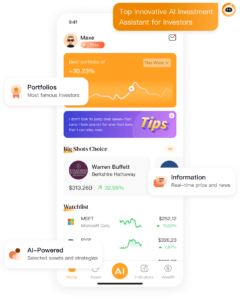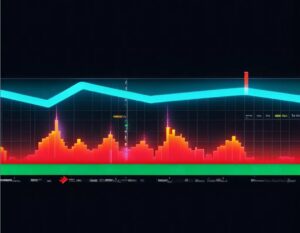Financial Markets Consulting: US Economic Calendar
THURSDAY, OCT. 10
8:30 am Initial jobless claims
8:30 am Consumer price index
8:30 am Core CPI
8:30 am CPI year over year
8:30 am Core CPI year over year
9:15 am Federal Reserve Governor Lisa Cook speaks
10:30 am Richmond Fed President Tom Barkin speaks
11:00 am New York Fed President John Williams speaks
FRIDAY, OCT. 11
8:30 am Producer price index
8:30 am Core PPI
8:30 am PPI year over year
8:30 am Core PPI year over year
9:45 am Chicago Fed President Austan Goolsbee gives opening remarks
10:00 am Consumer sentiment (prelim)
10:45 am Dallas Fed President Lorie Logan speaks
1:10 pm Federal Reserve Governor Michelle Bowman speaks
Foreign Exchange Worth Watching in the Fourth Quarter
As we approach the fourth quarter of 2024, the foreign exchange (FX) market is poised for significant movements driven by various geopolitical, economic, and monetary factors. Investors and traders should pay close attention to several currency pairs likely to be influenced by upcoming events and trends. This article explores the key currencies to watch, the factors driving their movements, and the potential implications for market participants.

Key Currencies to Watch
-
Euro (EUR)
The Eurozone is facing a complex economic landscape as it navigates post-pandemic recovery and ongoing inflationary pressures. The European Central Bank (ECB) has been adjusting its monetary policy in response to these challenges. With interest rate decisions and inflation data being critical in shaping the Euro’s value, traders should monitor the ECB’s stance closely.
The Euro could experience volatility especially if economic indicators show signs of weakness or strength. For instance, any indications of a slowdown in Germany, the region’s largest economy, could lead to a depreciation of the Euro against other major currencies. Conversely, positive economic data could strengthen the Euro, especially against the U.S. dollar.
-
U.S. Dollar (USD)
The U.S. dollar remains a dominant currency in the FX market, often viewed as a safe haven during periods of uncertainty. As the Federal Reserve continues to navigate its monetary policy amidst fluctuating inflation rates and employment data, the dollar’s strength will be closely tied to these economic indicators.
In the fourth quarter, market participants should keep an eye on the Fed’s decisions regarding interest rates. A potential rate hike could bolster the dollar, while any dovish signals might lead to a decline. Additionally, geopolitical events, particularly those involving the U.S., can impact investor sentiment and, by extension, the dollar’s value.
-
Japanese Yen (JPY)
The Japanese yen is often seen as a safe-haven currency, particularly during times of global economic uncertainty. The Bank of Japan (BoJ) has maintained a loose monetary policy for years, but as inflation trends upwards, there may be speculation on potential changes in their approach.
In the fourth quarter of 2024, investors should monitor inflation rates in Japan and any signals from the BoJ regarding potential policy shifts. A tightening of monetary policy could lead to a stronger yen, particularly against currencies like the euro and the pound.
-
British Pound (GBP)
The British pound has faced volatility due to Brexit-related uncertainties and ongoing economic challenges within the UK. As the fourth quarter unfolds, traders should watch for any developments regarding trade agreements and economic policies from the new government.
The Bank of England’s (BoE) approach to interest rates will also be crucial. If the BoE indicates a willingness to raise rates in response to inflationary pressures, the pound could strengthen significantly. Conversely, any signs of economic weakness or reluctance to adjust rates might lead to further depreciation.
-
Chinese Yuan (CNY)
The Chinese yuan has become increasingly significant in global trade and investment. As China continues to recover from its strict pandemic measures, economic growth rates will be a critical factor influencing the yuan’s value.
In the fourth quarter, traders should pay attention to China’s economic indicators, such as GDP growth, manufacturing data, and export figures. Additionally, the People’s Bank of China’s (PBoC) monetary policy decisions will play a significant role in shaping the yuan’s trajectory. A stronger yuan could impact trade balances and investor sentiment globally.
Factors Influencing Currency Movements
Economic Indicators
Economic data releases, such as GDP growth rates, employment figures, and inflation reports, are fundamental to FX trading. These indicators provide insight into the health of economies and influence central banks’ monetary policies. As such, they are key drivers of currency valuations.
Geopolitical Events
Geopolitical tensions can create uncertainty in the markets, often leading to increased volatility. Events such as elections, trade negotiations, and international conflicts can significantly impact currency values. Traders should remain vigilant for news that could affect market sentiment.
Central Bank Policies
Central banks play a crucial role in determining currency values through their monetary policies. Interest rate decisions, quantitative easing measures, and forward guidance can lead to sharp movements in currency pairs. Understanding the outlook of central banks is essential for predicting currency trends.
Strategies for Traders
Fundamental Analysis
Traders should focus on economic indicators and central bank policies to make informed decisions. Keeping abreast of economic calendars, reports, and central bank announcements will provide insights into potential currency movements.
Technical Analysis
Utilizing technical analysis can help traders identify entry and exit points. Chart patterns, support and resistance levels, and trend indicators can guide trading strategies in a volatile FX market.
Risk Management
Given the inherent volatility in the FX market, effective risk management strategies are crucial. Traders should consider setting stop-loss orders and position sizing to mitigate potential losses.
Conclusion
The fourth quarter of 2024 presents a dynamic landscape for foreign exchange trading. With key currencies like the Euro, U.S. dollar, Japanese yen, British pound, and Chinese yuan set to experience significant movements, traders must remain vigilant. By focusing on economic indicators, geopolitical developments, and central bank decisions, market participants can position themselves to navigate the complexities of the FX market effectively. As always, a combination of fundamental and technical analysis, coupled with sound risk management, will be essential for success in this ever-evolving environment.

For more investment information, download our app: MAXE: The Revolutionary AI Financial Invest Management App. Get real-time updates on US stocks, securities, futures, exchange rates, and other asset information to help you make faster investment decisions.
MAXE serves users around the globe. As of now, the cumulative number of users who have downloaded the MAXE app has exceeded 300,000. This milestone indicates that an ever-growing number of individuals recognize the value of MAXE and are utilizing the APP to optimize their investment and financial management strategies.

Now, MAXE is available on Google Play and App Store. Say goodbye to traditional financial management methods and embrace the future of finance with MAXE.











